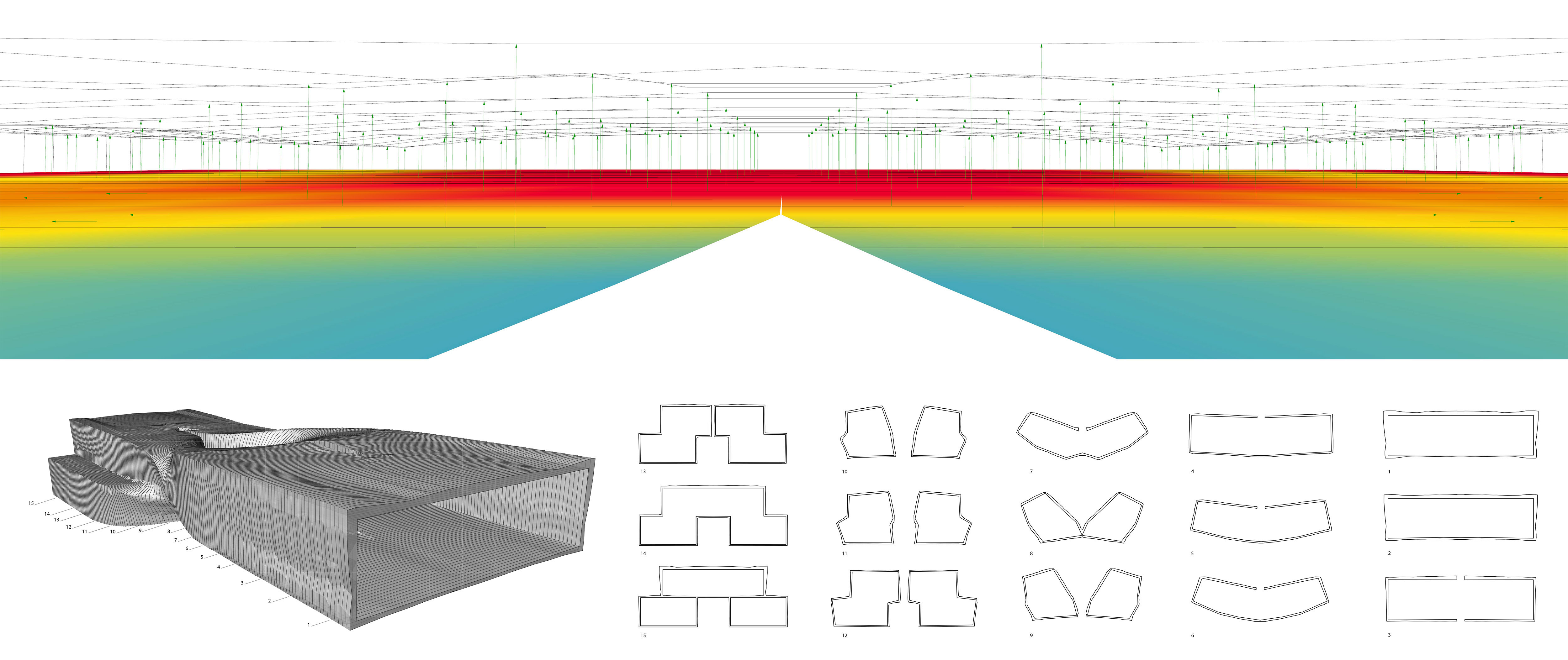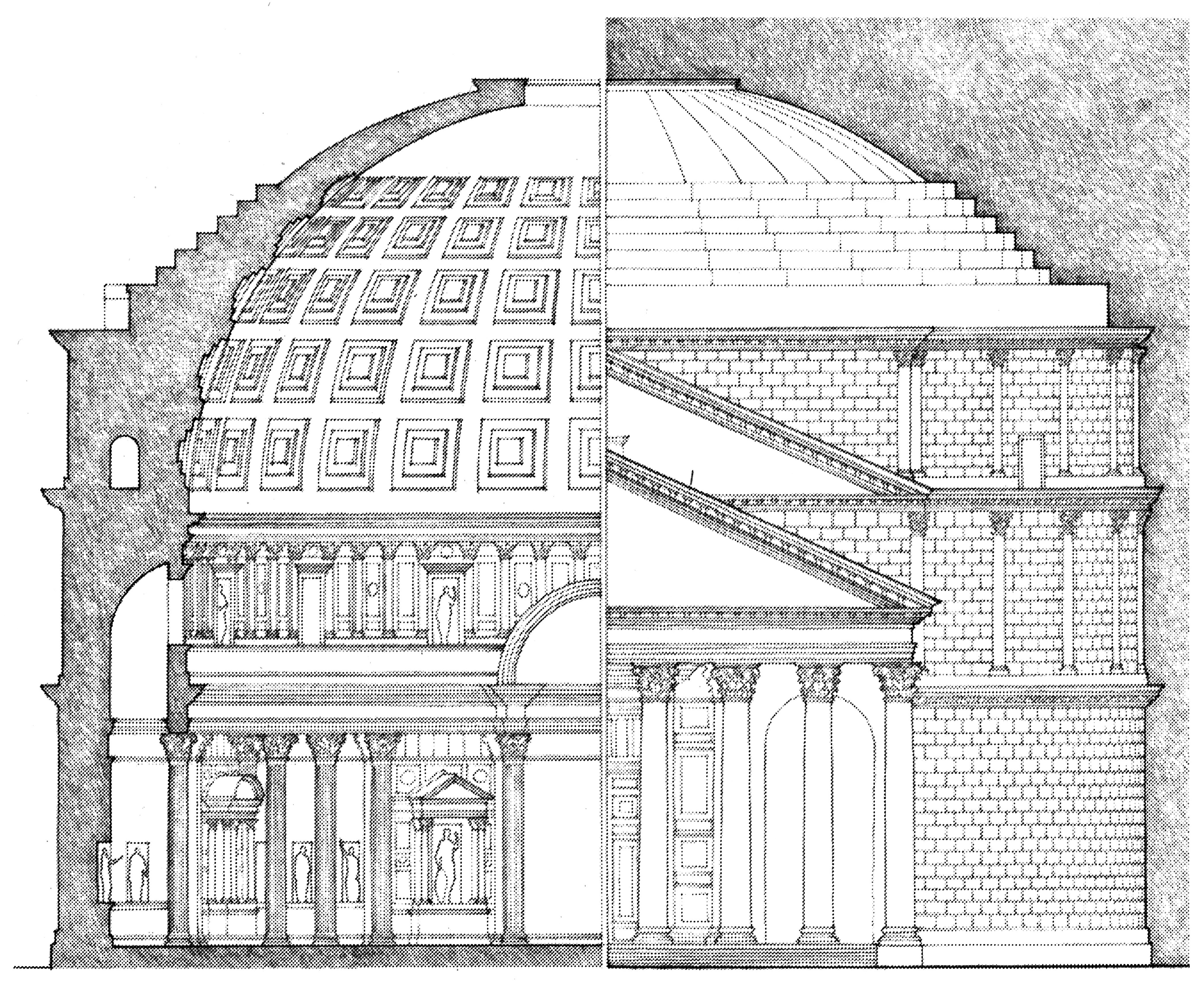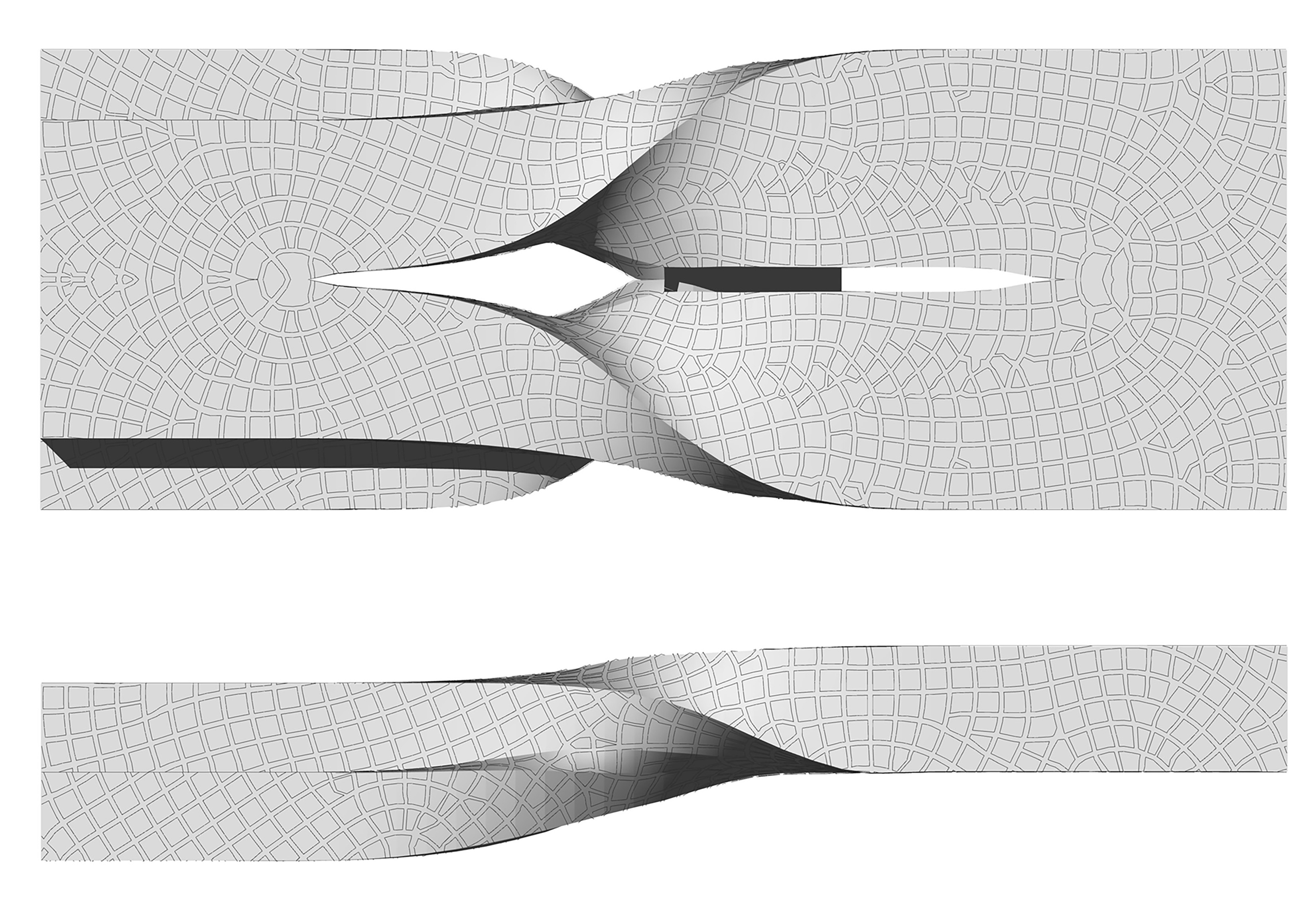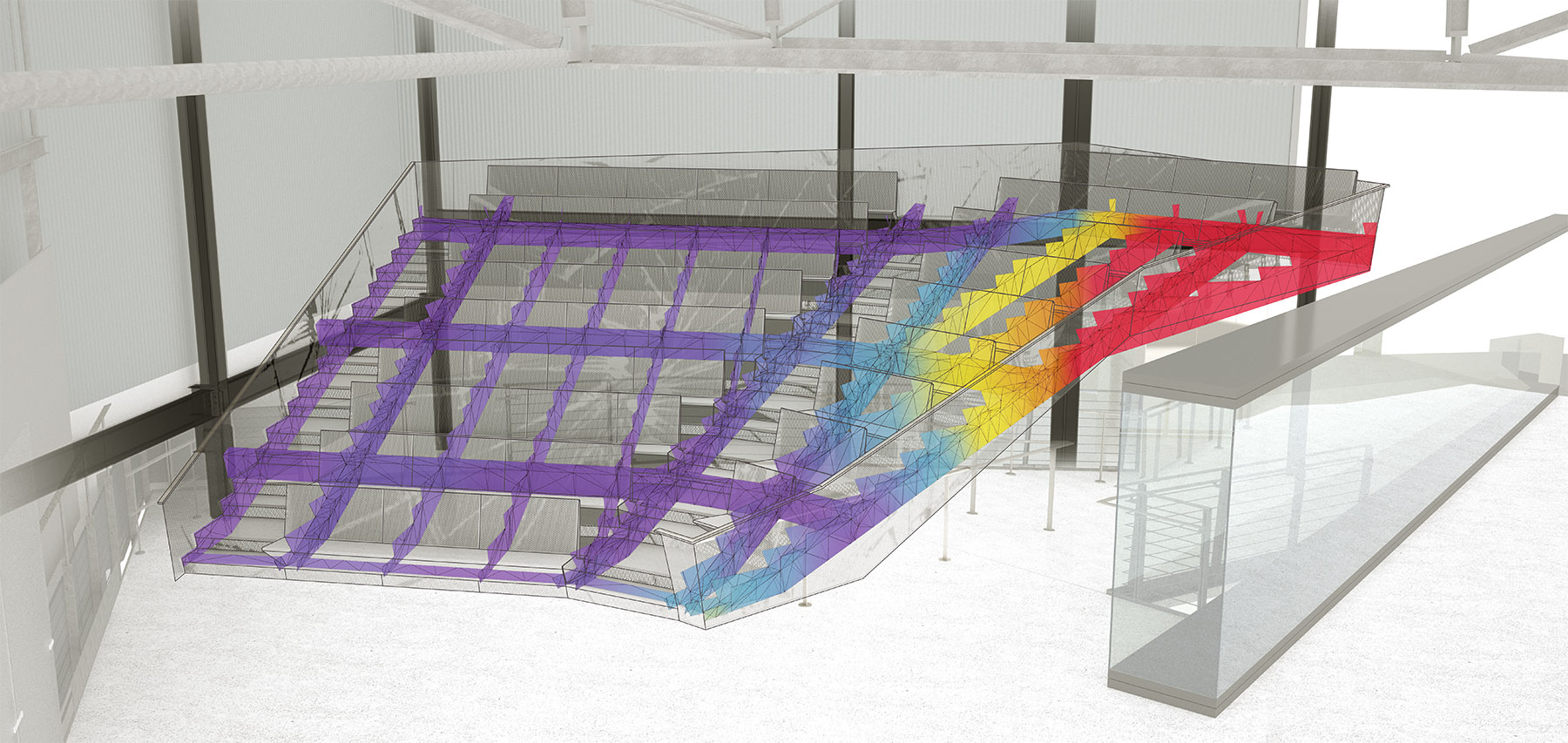In response to interest in structural surface design for novel forms, CRAFT has been researching a two-pronged approach to its structural surface design—Section Modulus Optimization and Stress Patterning. After the initial steps of discretization and Finite Element Analysis, the goal is to use the data gathered as a parameter in the adjustment of surface properties. The two avenues explored in this study are local surface thicknesses and the patterning of structural reinforcement throughout the surface.
This was achieved in Grasshopper using Millipede and Karamba analysis engines. Illustrated here are Karamba’s Iso-Lines, paths between equal principal stresses across a shell structure. The contoured map tells a story similar to that of a topographical one, with increasing scalar values expressed in two dimensions. Below, a combination of Karamba’s Force Flow Lines, overlaid with a color-gradient Von Mises Stress map, illustrates multiple modes of stress representation. The Force Flow Lines, or load paths, map the distribution of loads over a shell, forming eddies in areas of ineffective force direction. Either of these line-mapping techniques could be implemented in the creation of a novel structural pattern.


By translating the scalar data from the Von Mises Stress map into vector data, the depth of the slab can be scaled using the local section modulus of each analysis element, in a process called Section Modulus Optimization (SMO). Holding the system stress at a uniform 3000 PSI and allowing the slab depth to vary from 6” to 24”, the solid result is calibrated to the architect’s formal ambition.

Structural Patterning is nothing new. With the Pantheon, Apollodorus created one of the most enduring examples of structural expression — pictured here in partial section. Its ornamented coffers form a waffle slab which accents the enormous concrete dome, while decreasing weight. This language has remained untouched for almost 2000 years, while the lower sections have been remodeled with the fashions of the centuries that followed.

When building with concrete, or other plastic materials, the organization of the waffle slab ribs presents an exciting opportunity for novel Stress Patterning. Karamba and Millipede present beautiful options for mapping directions of principal stresses, load paths, and iso-lines of stress. The most structurally meaningful patterning utilized a scale field to adjust the density of ribs according to intensities of stress, yielding a field of expanding and contracting cells that could be expressed as concrete coffers.


Further development of stress-optimized structural patterning may combine Modulus Optimization and Stress Patterning to achieve an expressive and efficient system rendered in the most potentially plastic of construction materials.
Tags: FEA, finite element analysis, section modulus optimization, SMO, structural patterning


